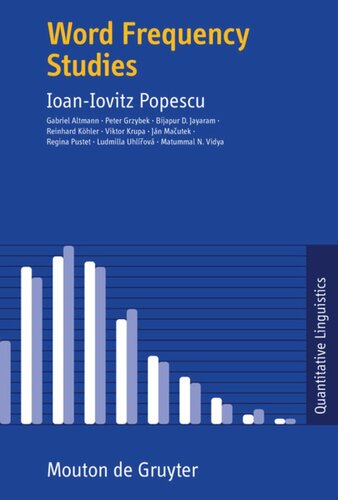

Most ebook files are in PDF format, so you can easily read them using various software such as Foxit Reader or directly on the Google Chrome browser.
Some ebook files are released by publishers in other formats such as .awz, .mobi, .epub, .fb2, etc. You may need to install specific software to read these formats on mobile/PC, such as Calibre.
Please read the tutorial at this link: https://ebookbell.com/faq
We offer FREE conversion to the popular formats you request; however, this may take some time. Therefore, right after payment, please email us, and we will try to provide the service as quickly as possible.
For some exceptional file formats or broken links (if any), please refrain from opening any disputes. Instead, email us first, and we will try to assist within a maximum of 6 hours.
EbookBell Team

5.0
68 reviewsThe present book finds and collects absolutely new aspects of word frequency. First, eminent characteristics (such as the h-point, first used in scientometrics, the k-, m-, and n-points) are introduced – it can be shown that the geometry of word frequency is fundamentally based on them. Furthermore, various indicators of text properties are proposed for the first time, such as thematic concentration, autosemantic text compactness, autosemantic density, etc. In detail, the autosemantic structure of a given text is evaluated by means of a graph representation and its properties (according to a problem from network research). Special emphasis is given to the part-of-speech differentiation, which plays a significant role in stylistics.
On the basis of a general theory, which has been developed especially for linguistic research, problems of the frequency structure of texts with respect to word occurrence are investigated and discussed in detail. Methodologically, specific reference is made to synergetic linguistics, including some exemplary analyses, showing that there are points of contact with this field. A separate chapter is dedicated to within-sentence word position; this issue considers grammar as well as language genesis; another chapter is dedicated to the type-token ratio, discussing all established methods and their relevance for word frequency analysis.
All methods presented in the book are statistically tested; to this end, some new tests have been developed. All procedures and calculations are conducted for 20 languages, ranging from Polynesia, Indonesia, India, and Europe to a North American Indian language. The broad distribution of the data and texts from all genres allows generalizations with respect to language typology.